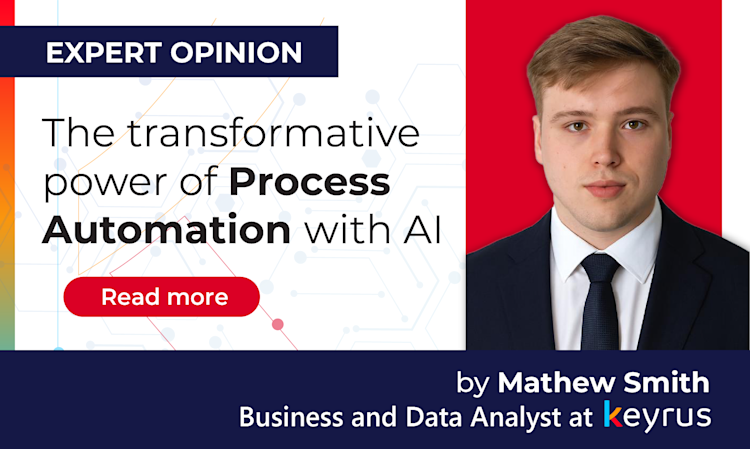Transformative Power
The transformative power of process automation lies not just in accelerating tasks, but in reshaping how work is designed, executed, and scaled. In today’s fast-paced digital landscape, where operational agility defines success, automation is no longer an optional upgrade—it’s the foundation for building a smarter, more resilient, and scalable organisation. The transformative power of AI is evident when human insight meets automation. By combining human judgement with AI-driven precision, businesses can unlock new efficiencies, reimagine workflows, and elevate the value of work. Business users are no longer just passive recipients of automated tools. With platforms like Power Automate, n8n, and Make, they’re becoming builders in their own right by designing flows, setting up triggers, and stitching together systems without waiting for IT to step in.
Automation and AI
Modern automation and AI go far beyond replacing repetitive tasks. Instead, they integrate AI into every stage of the business process, enabling systems that adapt dynamically and optimize performance. With AI-driven insights, organisations can eliminate silos, accelerate decision-making, and create adaptive workflows that keep pace with evolving demands. The power of AI lies in its ability to transform raw data into actionable intelligence. Through machine learning and natural language processing, businesses can automate complex tasks, predict trends, and personalise services, leading to a reshaped customer experience and improved operational efficiency.
Intelligent Process
A truly intelligent process does more than automate—it understands the context. This means using analytics and process mining to uncover bottlenecks before designing solutions. It’s about ensuring that intelligent automation aligns with business goals, rather than accelerating outdated or flawed workflows.
A business process enhanced by automation becomes more agile, connected, and transparent. From CRM integrations to financial operations, connecting systems ensures data flows seamlessly, empowering teams to focus on high-value activities.
Intelligent process automation (IPA) blends robotic process automation (RPA), machine learning, and artificial intelligence to handle both routine and complex tasks. By integrating RPA with AI, organisations can handle unstructured data, make contextual decisions, and continually optimize workflows.
Agentic AI
Agentic AI represents the next evolution—systems that proactively initiate workflows, anticipate needs, and adapt based on real-time conditions. This level of AI process automation turns static workflows into living, responsive systems.
Analytics
With embedded analytics, organisations can measure the impact of every automation, track productivity gains, and identify further opportunities to improve process performance. This data-driven feedback loop fuels continuous innovation.
Business Automation
Business automation is not about short-term fixes—it’s about building pipelines, governance, and scalability into every process. This ensures compliance, auditability, and consistent quality.
AI in Streamlining
AI in streamlining processes means automating approval flows, routing notifications intelligently, and ensuring that tasks align with business priorities. Done right, automation becomes invisible—yet indispensable.
Workflow
Redesigning the workflow with AI-driven automation enables faster execution, fewer errors, and better collaboration. Teams move from reactive problem-solving to proactive value creation.
RPA
RPA remains a cornerstone of automation, but its capabilities multiply when paired with AI integration. This shift from traditional automation to intelligent automation allows bots to handle exceptions, interpret natural language, and learn over time.
Don’t Just Automate the Task – Understand the Context
Automating a task isn’t the same as improving a process. You might speed things up, but if the underlying logic is flawed or based on legacy assumptions, all you’ve done is accelerate bad outcomes. The real value comes from context-aware automation - where human insight guides the design, and data shapes the logic. That means involving domain experts in automation projects, not just developers. It means using process mining tools to identify bottlenecks before jumping to solutions. And it means thinking in terms of systems, not just scripts, seeing how one automation impacts the whole business flow, not just a single user. This isn’t about AI agents replacing people. It’s about machines doing what they do best - speed, scale, consistency, so people can focus on the exceptions, the insights, the decisions. The parts of work that still need human judgement.
Time to Move Beyond Macros and Manual Fixes
If your automation strategy still starts and ends with Excel macros or weekly data dumps into a shared drive, it’s time for a rethink. A modern automation approach doesn’t just patch over inefficiencies - it eliminates them at the root. That means building pipelines, not just automations. Connecting your CRM to your marketing platform, syncing operations with finance, embedding governance into every flow. It also means enabling version control, auditability, and monitoring from day one, not as an afterthought. Done right, automation becomes invisible. It just works. Approvals route themselves. Notifications appear when needed. Data flows seamlessly from system to system. And your teams? They stop firefighting and start focusing on value.
Start Building That Advantage – Now
Process automation isn’t about doing the same work faster. It’s about creating space for better work. Strategic work. It’s what lets finance teams spend time analysing forecasts, not reconciling spreadsheets. What lets customer service resolve issues proactively, not just respond to tickets. What turns operations into a competitive differentiator, not just a cost centre.
At Keyrus, we help organisations do exactly that. We don’t just automate tasks - we transform processes. We empower your teams to design smarter workflows, implement them securely, and scale them with confidence. Because when automation becomes part of your DNA, you don’t just save time. You gain momentum.
Let’s help your teams automate what slows them down - so they can focus on what moves them forward. Contact us at sales@keyrus.co.za
